
cd_nom
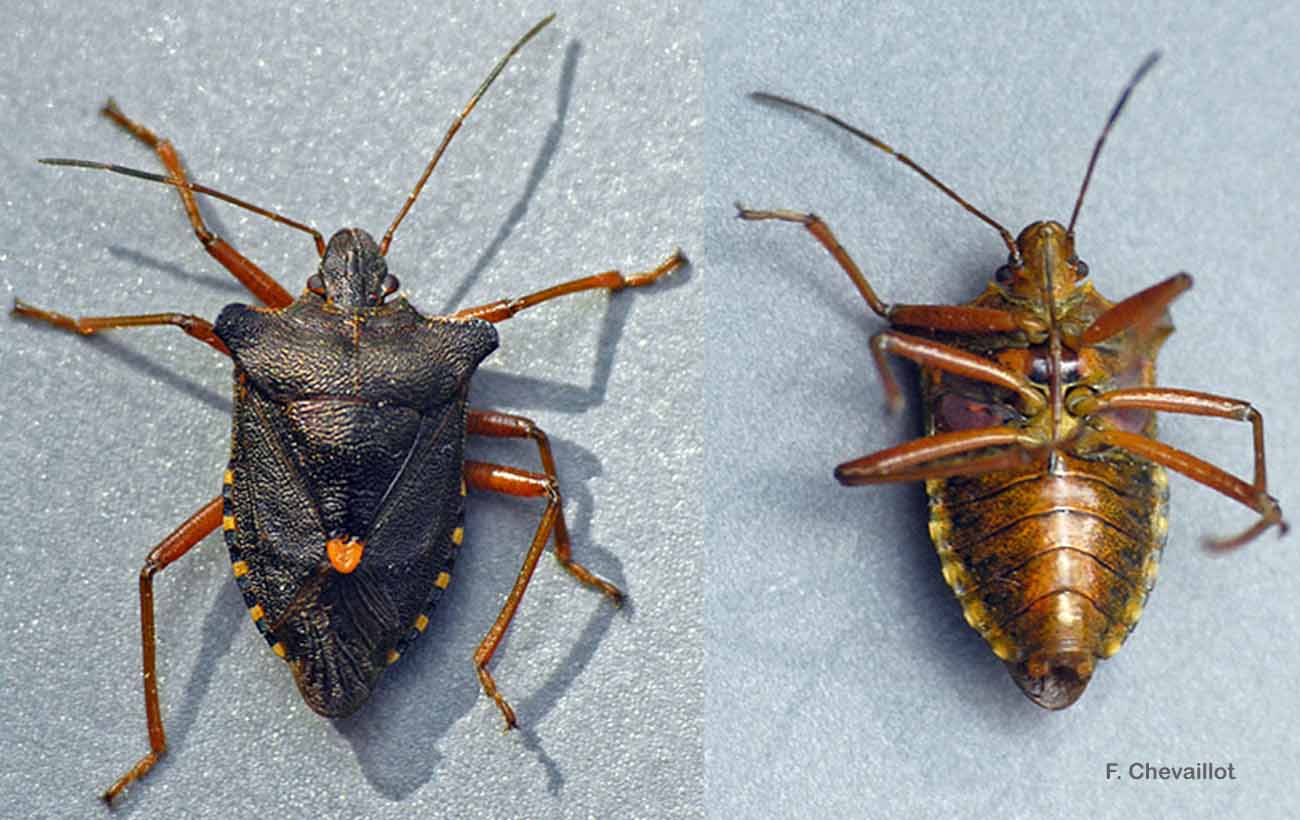
| Author : F. Chevaillot |
 |
To get the picture, please visit:
Fred CHEVAILLOT
Moulin de Castor
La Maynobe
12550 COUPIAC
06 51 19 18 32
09 88 28 31 26
www.insecte.org
email : fred.chevaillot@wanadoo.fr
Any reuse of one or more photographs on this site is subject to an authorization request from the author.
Link to the Code of Intellectual Property (Legifrance)
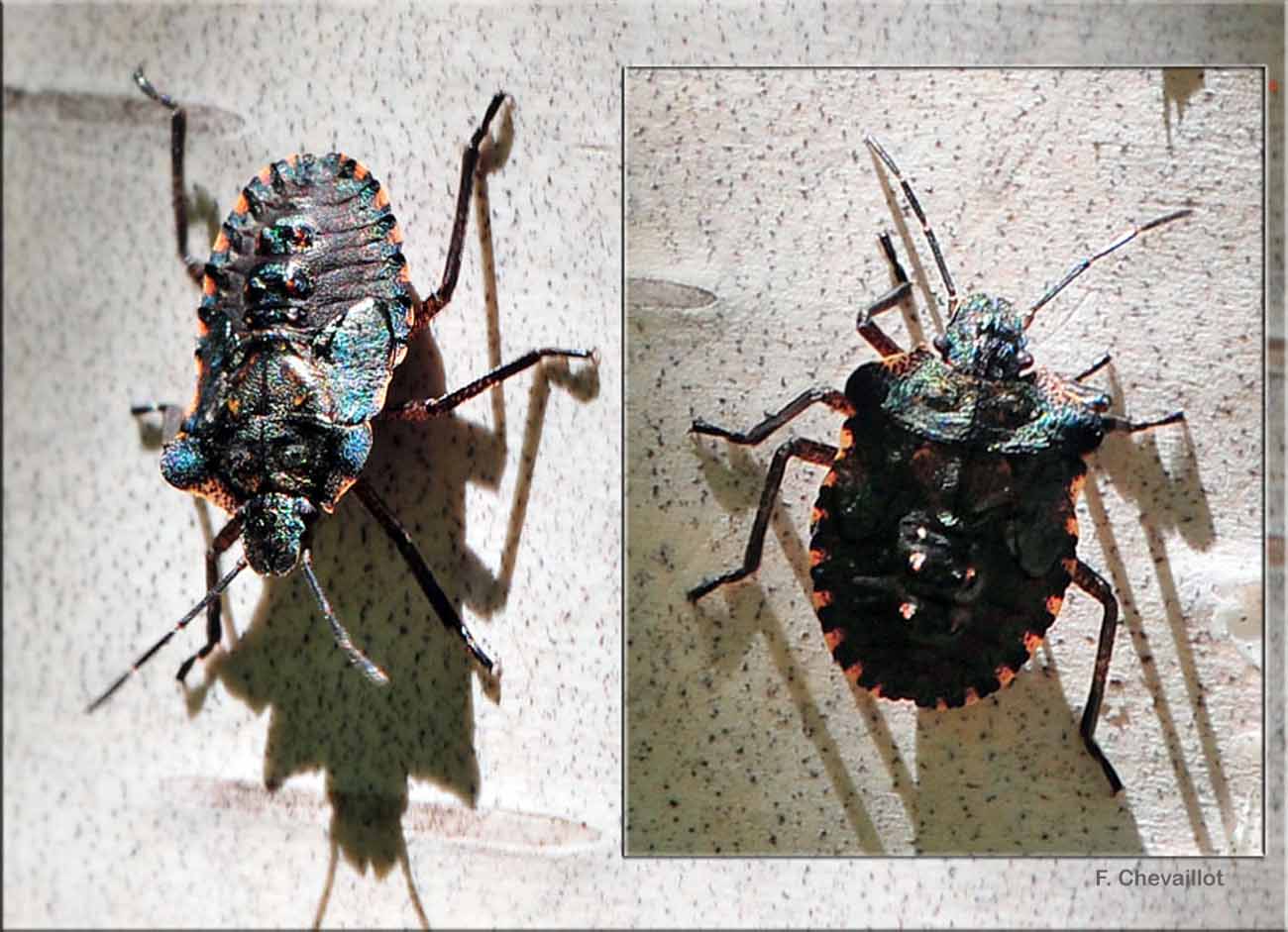
| Author : F. Chevaillot |
 |
To get the picture, please visit:
Fred CHEVAILLOT
Moulin de Castor
La Maynobe
12550 COUPIAC
06 51 19 18 32
09 88 28 31 26
www.insecte.org
email : fred.chevaillot@wanadoo.fr
Any reuse of one or more photographs on this site is subject to an authorization request from the author.
Link to the Code of Intellectual Property (Legifrance)
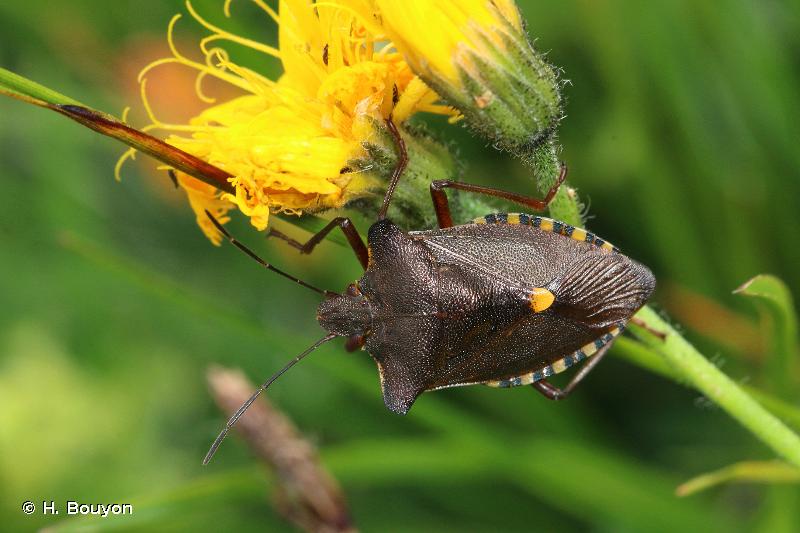
| Author : H. Bouyon |
 |
To get the picture, please visit:
Hervé BOUYON
email : herve.bouyon@wanadoo.fr
Any reuse of one or more photographs on this site is subject to an authorization request from the author.
Link to the Code of Intellectual Property (Legifrance)

| Author : J. Touroult |
 |
To get the picture, please visit:
Julien Touroult
UMS PatriNat AFB - CNRS - MNHN
Muséum national d'Histoire naturelle, CP41, 36 rue Geoffroy Saint-Hilaire, 75005 Paris
Despite the Creative Commons license, please inform the author of the use which will be made of his photo
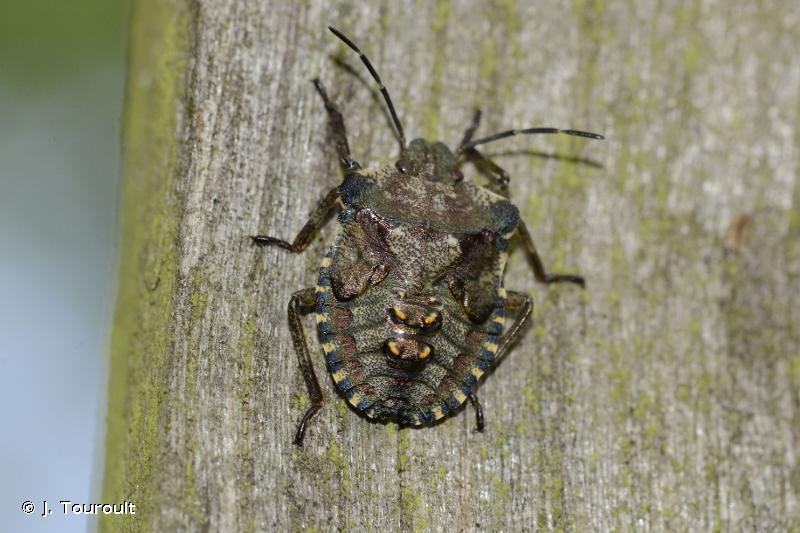
| Author : J. Touroult |
 |
To get the picture, please visit:
Legend: Larve stade 5.
Despite the Creative Commons license, please inform the author of the use which will be made of his photo
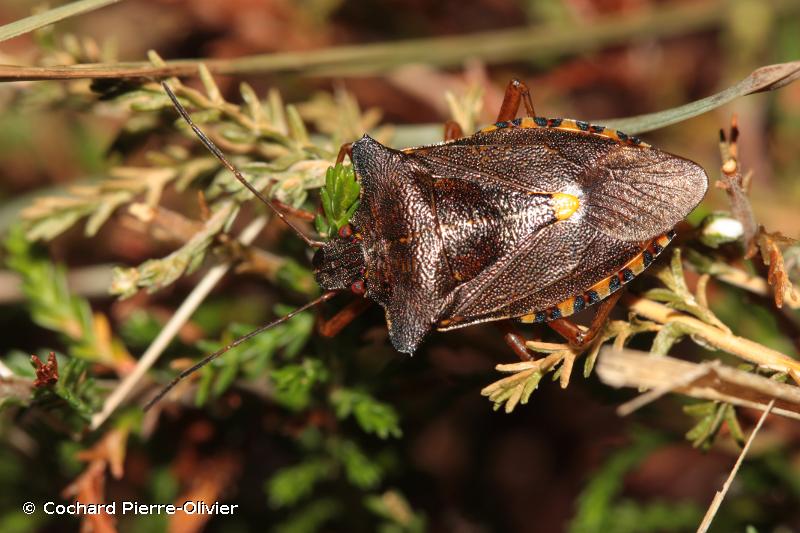
| Author : Cochard Pierre-Olivier |
 |
Despite the Creative Commons license, please inform the author of the use which will be made of his photo
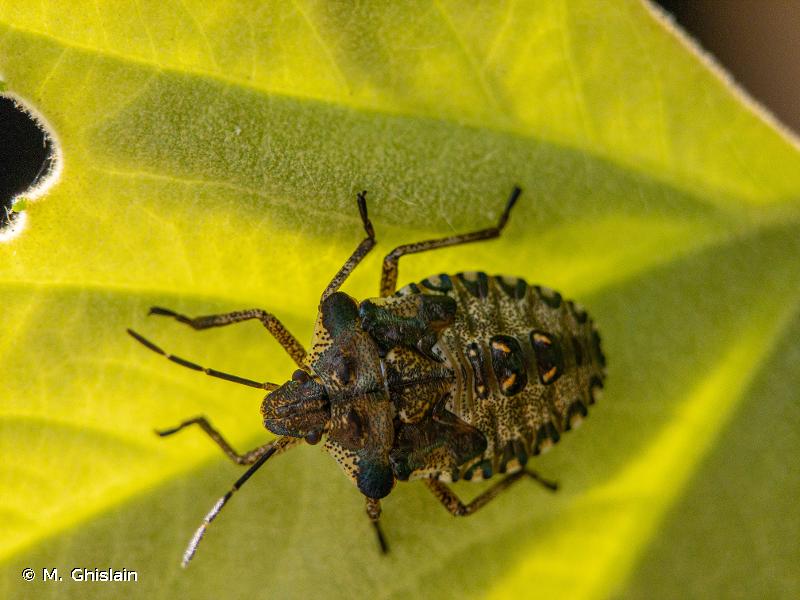
| Author : M. Ghislain |
 |
To get the picture, please visit:
Ghislain Manon
MNHN
43 rue Buffon
75005 Paris
Despite the Creative Commons license, please inform the author of the use which will be made of his photo

| Author : R. Baghi |
 |
Despite the Creative Commons license, please inform the author of the use which will be made of his photo
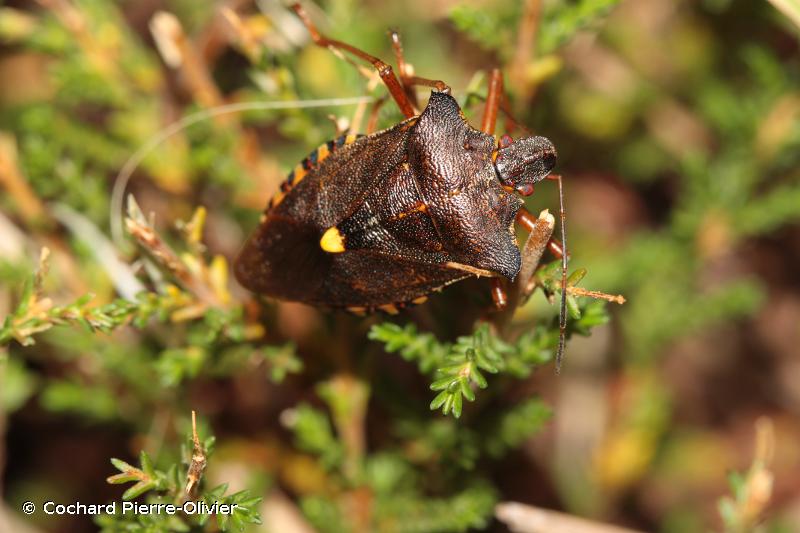
| Author : Cochard Pierre-Olivier |
 |
Despite the Creative Commons license, please inform the author of the use which will be made of his photo
Taille : 12 – 16 mm
Diagnose :Grande punaise de couleur marron avec les pattes orange. Elle a les angles huméraux du pronotum prolongés en pointe élargie qui dépasse les bords du corps, le connexivum (bord de l'abdomen) bicolore alternativement sombre et clair, et l'apex du scutellum avec une tache orange.
Détermination : Simple.
Espèces proches :Peu de risque de confusion avec ses angles huméraux du pronotum caractéristiques, son connexivum bicolore et l'apex de son scutellum orange. Elle est vaguement similaire à Pinthaeus sanguinipes, une très rare espèce qui a la même coloration, mais celle-ci possède un rostre épais typique des Asopinae, des profémurs dentés, et 2 callosités blanches dans les angles du scutellum.
Période d'observation : Avril à octobre avec un pic principal en aout.
Biologie-éthologie :Espèce arboricole qui se nourrit des fruits, fleurs et bourgeons de plusieurs arbres, dont les arbousiers, aubépines, aulnes, bouleaux, charmes, chênes, cornouillers, érables, frênes, hêtres, mélèzes, noisetier, prunus, saules, tilleuls. Elle commet parfois des dégâts sur les poiriers, pommiers, cerisiers et pêchers cultivés. Les larves de stade II hibernent et les adultes apparaissent seulement en été.
Biogéographie et écologie :Espèce répandue dans toute la région paléarctique, atteignant 61° de latitude nord dans la péninsule Scandinave, et vers l'est, l'Inde, la Corée et le Japon, alors qu'au sud elle évite les zones méditerranéennes. Elle atteint 1 850 m d'altitude. C'est une espèce assez commune, sauf en zone méditerranéenne sèche où elle est absente. Elle colonise les régions boisées humides et fraîches : forêts de feuillus et de conifères, bords des rivières boisés, landes, marais, tourbières.
Roland Lupoli (),2019
Continental
Metropolitan France
Overseas
Marine
Metropolitan France
Overseas
The map presents a summary at the 10 x 10 km grid of the observation data for the species transmitted to the SINP. These data have been subjected to validation filters.
The map presents a reference distribution layer of the species at the scale of departments and marine sectors. The presence and absence data were established by expertise within a network of partners. This reference distribution is used in the validation process of the SINP data at the INPN level.
Corresponds to a report on the basis of at least one observation proved within a period of 10 years (20 years for little-known invertebrates) preceding the year and no presumption of extinction since obtaining the last data nor doubt on reproductive and implemented nature of this population. For migratory species, the presence indicated concerns areas of reproduction.
This status is based on one or more of the following criteria:
This point covers the absence, more difficult by nature to demonstrate than presence. This status is based on one or more of the following criteria:
This status must be assigned to a department in which the presence of the species is casual.
Particular case of absence due to a proven extinction less than a half century ago (older disappearances are treated as "no probable or definite").
In the state of knowledge, we can not comment on the presence or absence in the current department. This is the default status when not comprised in one of the previous categories or whenever there is doubt.
The map shows the global distribution of the species based on GBIF data (Global Biodiversity Information Facility).
